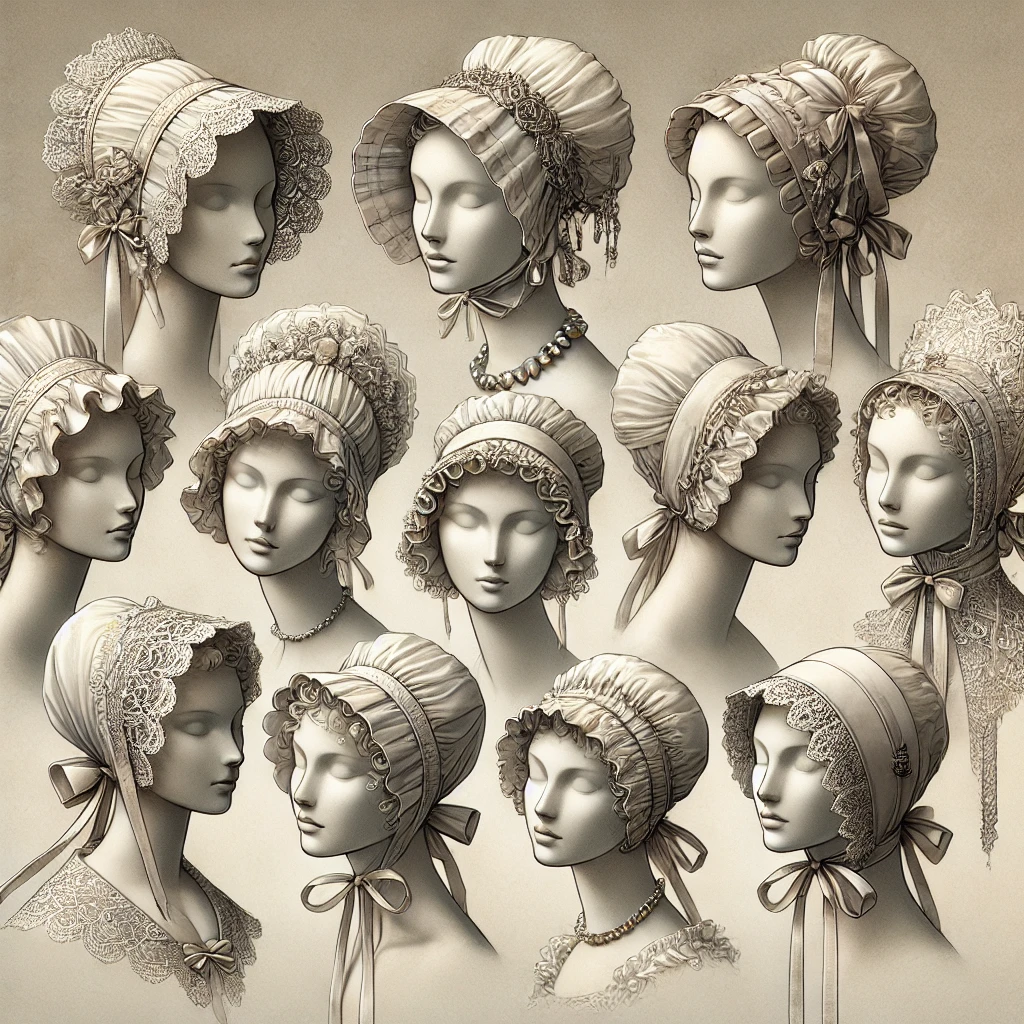The 1700s were a time of profound societal shifts and cultural transformations, prominently reflected in the fashion trends of the era. Among these, the white drawstring bonnet stands out as a significant accessory in women’s attire, symbolizing much more than just sartorial elegance. These 1700s white drawstring bonnets were not only a fashion statement but also a marker of social status and a shield of modesty for the women of the 18th century. This article delves into the multifaceted significance of these iconic garments, exploring their design, cultural implications, and their enduring legacy in the fashion world.
Historical Context and Social Significance
During the 1700s, Europe was a continent in flux, navigating the waters of the Enlightenment and the burgeoning changes brought by the Age of Revolution. Fashion was intricately linked with social hierarchy and personal identity. The white drawstring bonnet became a crucial accessory for women, symbolizing modesty and propriety. Women across all social strata wore these bonnets, making them a unifying yet differentiating accessory.
1700s White Drawstring Bonnets: Design and Material
Artisans originally crafted white drawstring bonnets from simple, breathable fabrics like linen and cotton, designing them with both practicality and aesthetics in mind. The choice of white fabric was deliberate, symbolizing purity and virtue, ideal traits in women according to societal norms of the time. The bonnet’s drawstring allowed for an adjustable fit, making it both comfortable and secure—a necessary feature for both the high-born lady and the working-class woman.
1700s White Drawstring Bonnets: Cultural Symbolism
The bonnet’s design was a direct reflection of the era’s cultural and social ethos. Wearing a bonnet signified a woman’s adherence to societal expectations of modesty and femininity. The shape of the bonnet—soft and encompassing—framed the woman’s face, highlighting her features while also conforming to the standards of modest attire. It was common to see these bonnets tied securely with a chin strap, adding an element of grace and decorum.
1700s White Drawstring Bonnets: Functionality Across Classes
White drawstring bonnets served different purposes across the social spectrum. For working-class women, they were functional, protecting their hair and skin from the elements while they engaged in outdoor labor. For the aristocracy, skilled artisans crafted these bonnets from finer materials like silk and adorned them with lace and ribbons, reflecting the wearer’s elevated social standing and refined tastes.
The Bonnet’s Role in Women’s Fashion
Throughout the 1700s, the bonnet was an indispensable part of a woman’s wardrobe, essential for outdoor activities like garden walks or social calls. It protected the wearer from the sun and was instrumental in keeping elaborate hairstyles intact. Despite their practicality, bonnets were also a fashion accessory, often customized to match the outfit or the occasion, from daily wear to special events like weddings.
Crafting and Customization: The Art Behind 1700s White Drawstring Bonnets
In the 1700s, the creation of white drawstring bonnets was an art form, demanding meticulous craftsmanship and a deep understanding of textiles. Each bonnet was hand-sewn, often by the women who would wear them or by specialized bonnet makers. The materials used varied from simple cottons for everyday wear to luxurious silks for those of the upper class. Decorations also varied; ribbons, lace, and occasionally pearls or semi-precious stones adorned these practical yet fashionable pieces. This customization allowed women to express individuality within the confines of societal norms.
Symbolism and Society: The Deeper Meaning of Bonnets
The white drawstring bonnet was more than a fashion accessory; it was laden with societal implications and symbolism. Designers strategically chose white, a color symbolizing purity and virtue, to align with societal expectations of women’s innocence and modesty. The bonnet itself acted as a barrier, concealing the hair and often part of the face, thus adhering to the modesty expected of women in public spaces. This headwear was a daily reminder of a woman’s place and role within the rigid social hierarchies of the time.
Legacy and Revival
As fashions evolved, the white drawstring bonnet of the 1700s gradually fell out of favor, giving way to more elaborate styles in the 19th century. However, people have not forgotten its classic design and symbolic value. Today, historical reenactments celebrate these bonnets, and vintage fashion enthusiasts embrace them, testifying to the enduring appeal of 18th-century fashion.
Conclusion
The 1700s white drawstring bonnets encapsulate an era of elegance, craftsmanship, and societal norms. Despite the passage of centuries, they continue to fascinate and inspire, serving as a testament to the enduring nature of historical fashion. These bonnets not only tell a story of the past but also continue to influence the present, bridging the gap between the bygone days and today’s fashion trends. They remain a symbol of beauty and restraint, echoing the complex history of women’s fashion.




